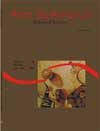<em>uvsH//uvsH</em> diploid strain favors an efficient method to evaluate the recombinagenic effect of chemical and physical agents in <em>Aspergillus nidulans</em> (Ascomycetes)
Abstract
Ascomycete Aspergillus nidulans is an excellent system for mitotic crossing-over studies. This is due to the fact that much of its cell cycle is passed in G2 and presents uvs mutations that increase frequencies of normal mitotic recombinations (uvsF and uvsH). The aim of this research was to obtain a new diploid strain of A. nidulans with proper characteristics for recombinagenesis investigations, or rather, heterozygous for nutritional markers and conidia coloration and homozygous for uvsH mutation. Higher sensitivity of diploid uvsH//uvsH in the monitoring of mitotic recombination events was shown by higher indexes of the diploid’s spontaneous mitotic recombination when compared with diploid uvsH+//uvsH +. New strain is a versatile tool that may be used in different studies on mitotic recombination in A. nidulansDownloads
Download data is not yet available.
Published
2008-05-09
How to Cite
Busso, C., Chiuchetta, S. J. R., Baptista, F., & Prado, M. A. A. C. (2008). <em>uvsH//uvsH</em> diploid strain favors an efficient method to evaluate the recombinagenic effect of chemical and physical agents in <em>Aspergillus nidulans</em> (Ascomycetes). Acta Scientiarum. Biological Sciences, 23, 603-607. https://doi.org/10.4025/actascibiolsci.v23i0.2718
Issue
Section
Biology Sciences
DECLARATION OF ORIGINALITY AND COPYRIGHTS
I Declare that current article is original and has not been submitted for publication, in part or in whole, to any other national or international journal.
The copyrights belong exclusively to the authors. Published content is licensed under Creative Commons Attribution 4.0 (CC BY 4.0) guidelines, which allows sharing (copy and distribution of the material in any medium or format) and adaptation (remix, transform, and build upon the material) for any purpose, even commercially, under the terms of attribution.
Read this link for further information on how to use CC BY 4.0 properly.
0.6
2019CiteScore
31st percentile
Powered by 

0.6
2019CiteScore
31st percentile
Powered by 











1.png)




3.png)













